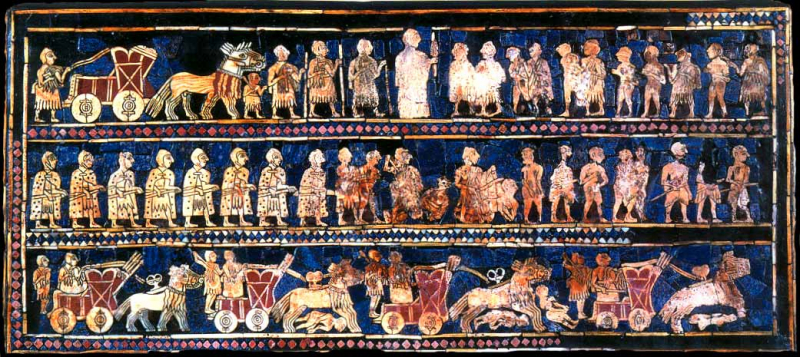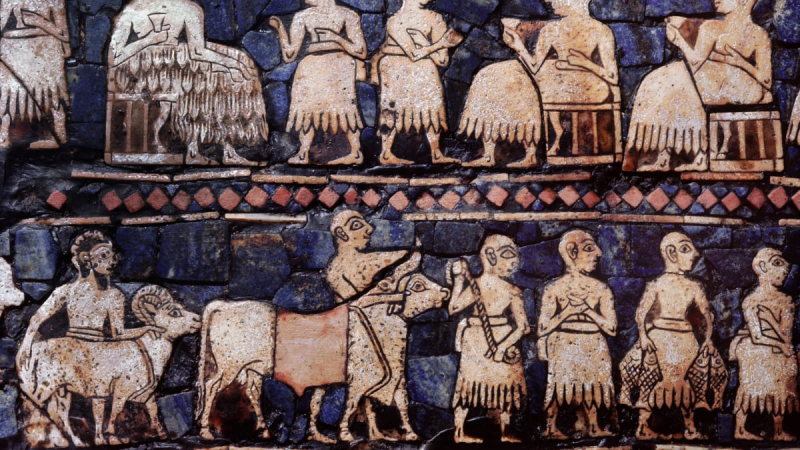Traders, Craftsmen and Merchants
Mesopotamia trade grew organically from the crossroads nature of the civilizations that dwelt between the rivers and the fertility of the land, according to History on the Net. Because of irrigation, southern Mesopotamia was abundant in agricultural products such as fruits and vegetables, nuts, dairy, fish, and meat from both wild and domestic animals. Aside from food, Mesopotamia was rich in mud, clay, and reeds, which they used to build their cities. Mesopotamia was required to trade for the majority of other essential goods, such as metal ores and timber. Long-distance trade was required for resources like copper and tin, as well as luxury items for the nobility, in addition to local trade, which brought food and animals into the city and took tools, plows, and harnesses out to the countryside. Early Mesopotamian merchants and traders formed caravans for long-distance trading.
Mesopotamian craftsmen produced a wide range of trade goods, including beautiful fabrics, robust, practically mass-produced ceramics made in temple workshops, leather goods, jewelry, basketry, devotional figurines, and ivory carvings, among others. Agricultural products such as grains and cooking oils, as well as dates and flax, were also exported.
Merchants established trade emporiums in different regions and cities as Mesopotamian trade expanded. Assyrian traders established a trading outpost in Kanesh, Anatolia, around 1700 B.C. The merchants journeyed nearly 1,000 miles to this city in modern-day Turkey. The Assyrian merchants paid a levy to the city's ruler to live in Kanesh and trade with the city dwellers and other merchants who traveled from afar to trade for Mesopotamian items.








